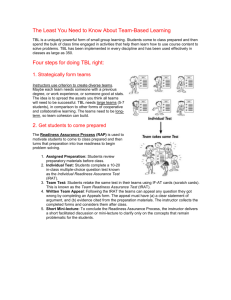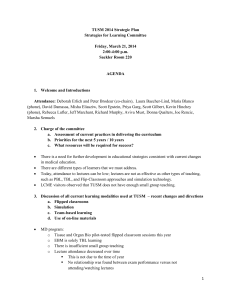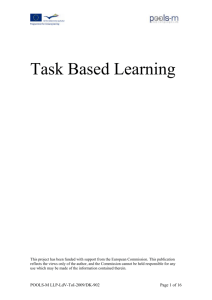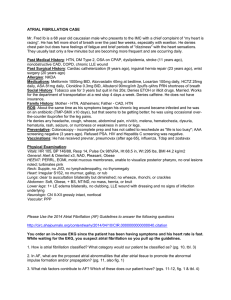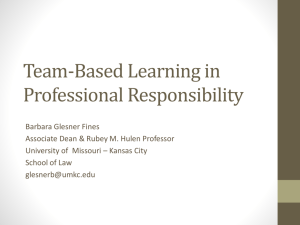2-page proposal file
advertisement
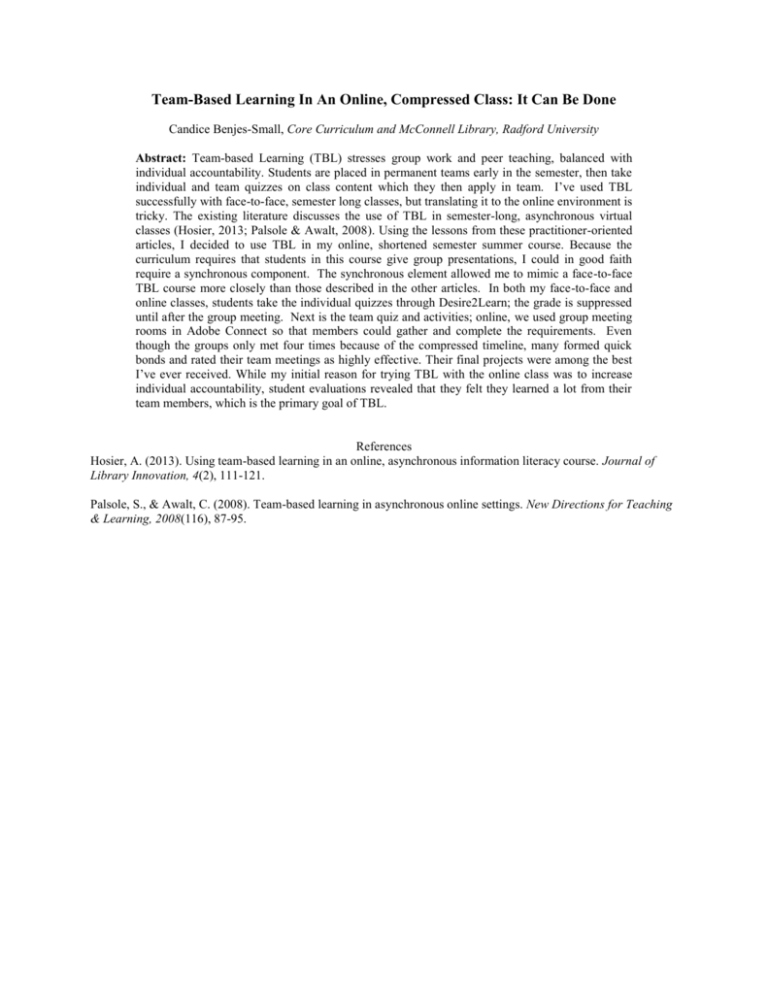
Team-Based Learning In An Online, Compressed Class: It Can Be Done Candice Benjes-Small, Core Curriculum and McConnell Library, Radford University Abstract: Team-based Learning (TBL) stresses group work and peer teaching, balanced with individual accountability. Students are placed in permanent teams early in the semester, then take individual and team quizzes on class content which they then apply in team. I’ve used TBL successfully with face-to-face, semester long classes, but translating it to the online environment is tricky. The existing literature discusses the use of TBL in semester-long, asynchronous virtual classes (Hosier, 2013; Palsole & Awalt, 2008). Using the lessons from these practitioner-oriented articles, I decided to use TBL in my online, shortened semester summer course. Because the curriculum requires that students in this course give group presentations, I could in good faith require a synchronous component. The synchronous element allowed me to mimic a face-to-face TBL course more closely than those described in the other articles. In both my face-to-face and online classes, students take the individual quizzes through Desire2Learn; the grade is suppressed until after the group meeting. Next is the team quiz and activities; online, we used group meeting rooms in Adobe Connect so that members could gather and complete the requirements. Even though the groups only met four times because of the compressed timeline, many formed quick bonds and rated their team meetings as highly effective. Their final projects were among the best I’ve ever received. While my initial reason for trying TBL with the online class was to increase individual accountability, student evaluations revealed that they felt they learned a lot from their team members, which is the primary goal of TBL. References Hosier, A. (2013). Using team-based learning in an online, asynchronous information literacy course. Journal of Library Innovation, 4(2), 111-121. Palsole, S., & Awalt, C. (2008). Team-based learning in asynchronous online settings. New Directions for Teaching & Learning, 2008(116), 87-95.



